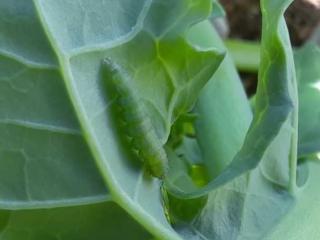Diamondback moth
- Mingenew
- Badgingarra
- Regans Ford
- Meckering
- Broomehill
- Cranbrook
- Frankland River
- Amelup
- Takalarup
- Gairdner
In mid-June Dan Taylor (DKT Rural Agencies) reported a lot of diamondback moths (DBM) flying around near Meckering.
DBM have been reported to be in low levels in canola crops throughout the Frankland River region with caterpillars causing some damage to canola leaves. Crops are being monitored.
DBM larvae are causing damage (shot holes) to four to six leaf canola near Amelup. The crop will be sprayed.
As part of a GRDC-funded project on DBM surveillance, DPIRD staff have again teamed up with grower groups (Mingenew Irwin Group, West Midlands Group and Liebe Group) and the South Eastern Agronomy Services (SEAR) to undertake widespread surveillance for DBM moths and larvae in focus crops during the season. So far, the project has found low numbers of DBM larvae, and in some cases feeding damage, in canola at: Mingenew, Badgingarra, Regans Ford, Broomehill, Cranbrook, Amelup, Takalarup and Gairdner. Forty-five focus crops throughout the grainbelt will be monitored fortnightly throughout the season, and growers and consultants will be updated through PestFax.
There are concerns over what widespread DBM activity now will mean for DBM prevalence in spring, or if we have mild daytime temperatures during the rest of winter.
DBM caterpillar activity should slow down in cold, wet weather conditions and then ramp up in spring. As spring approaches growers can refer DPIRD’s Seasonal Climate Outlook newsletters for the temperature outlook.
Growers and consultants are advised to monitor for DBM, especially from August onwards, by doing at least four lots of ten sweeps with an insect net at various locations in each crop.
Identifying and managing diamondback moth
DBM caterpillars are pale green, cigar-shaped and up to 12mm in length. They wriggle violently when disturbed and can drop down on a fine thread.
Damage from these grubs appears as chewed leaves, buds and flowers with the leaf chewing ranging from irregular holes in leaves to extensive leaf damage.
DBM caterpillars drop from plants when disturbed, and bashing some plants, especially those with holes in leaves, over an ice cream container is a good initial indication of their presence if you don’t have a sweep net handy.
Canola plants can recover from quite a lot of leaf defoliation early in the season.
DBM are difficult to control because they breed prolifically and insecticide sprays have limited coverage in advanced canola canopies.
Thresholds for pre-flowering canola control are:
- pre-flowering (stressed crop) - 30 or more grubs per 10 sweeps
- pre-flowering (no stress) - 50 or more grubs per 10 sweeps.
DBM thresholds for flowering canola are:
- early to mid-flowering (no stress) - 50 caterpillars or more per 10 sweeps
- mid to late flowering (no stress) - 100 or more caterpillars per 10 sweeps.
For more DBM information refer to:
- DPIRD’s Diagnosing diamondback moth page
- GRDC's Diamondback moth fact sheet
- GRDC’s Managing diamondback moth video.
For more information contact Svetlana Micic, Research scientist, Albany on +61 (0)8 9892 8591 or Alan Lord, Technical officer, South Perth on +61 (0)8 9368 3758.
Article authors: Cindy Webster (DPIRD Narrogin), Dusty Severtson (DPIRD Northam) and Alan Lord (DPIRD South Perth).

